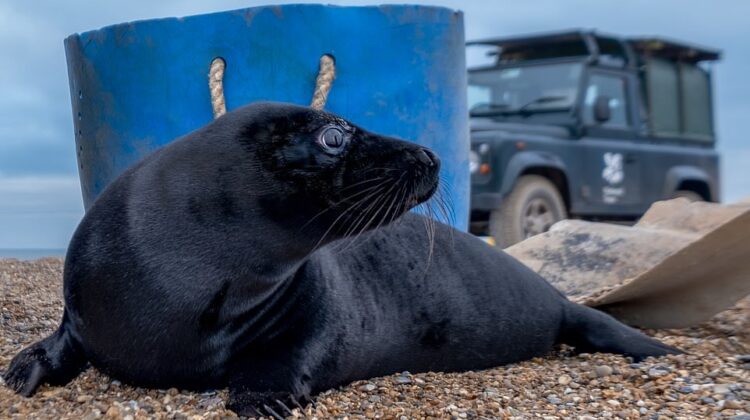
When wildlife inspectors spotted ten extremely unusual black seal pups in England’s largest grey seal colony on the north Norfolk coast, they were taken aback.
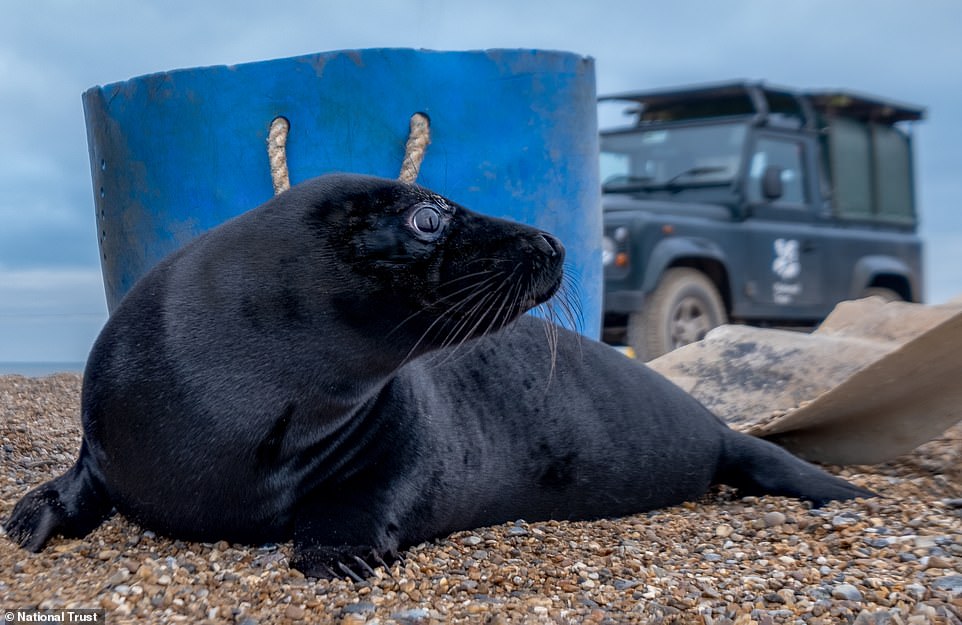
Puppies of grey seals have a white coat that sheds in two to three weeks, revealing a grey coat beneath the white skin.
According to the National Trust, about one out of every 400 grey seals has a velvety black coat.
Melanism refers to these seals’ increased production of the dark-colored pigment melanin, which makes them melanistic seals.

Rangers sighted 10 of the melanistic pups during the winter pupping season at Blakeney Point, and volunteer warden Hanne Siebers was able to photograph them.
The National Trust noted, “Typically, grey seals are born white, but their coat changes color as they lose their fur.”
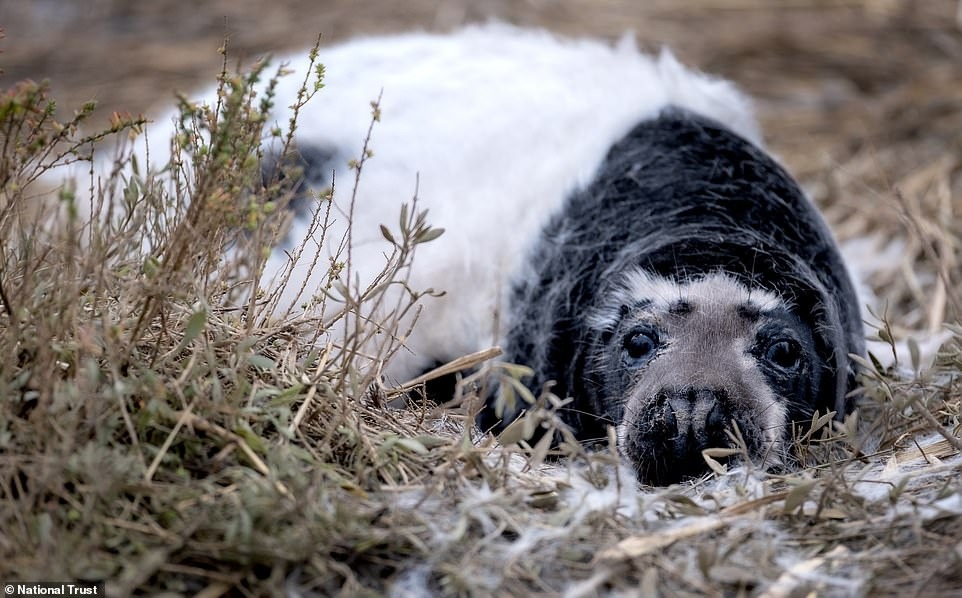
“Like their name indicates, a black velvety coat can only be visible after they molt.”
“Black seals are extremely rare, with research estimating that about one in every 400 grey seals is melanistic.”
“So far this season, our rangers have sighted ten.” Melanism is defined as “an increase in the production of the dark pigment melanin.”
According to the National Trust, a record 4,000 newborn seal pups will be born this year in Blakeney National Nature Reserve in Norfolk.
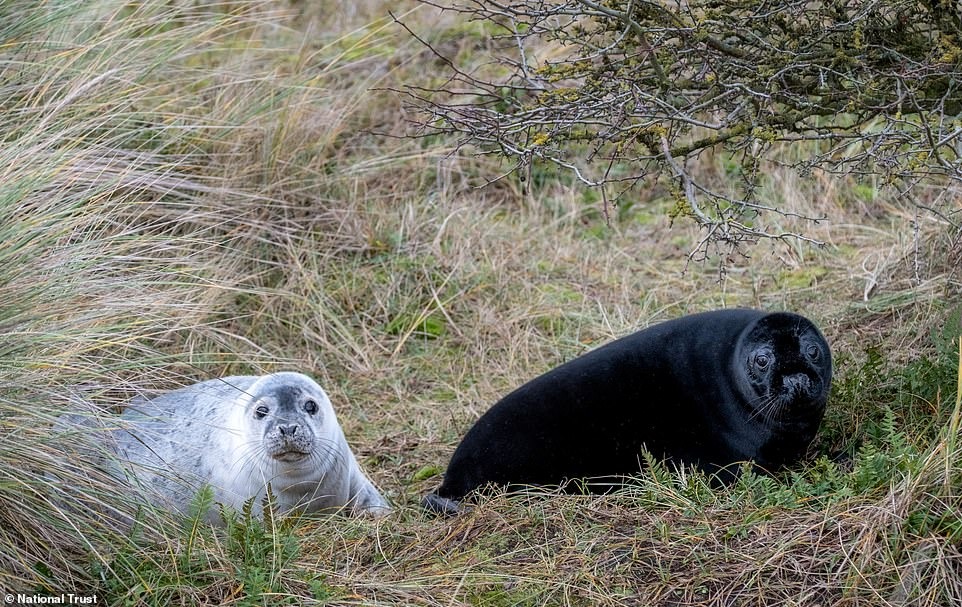
The number of seals born at the breeding spot has increased to the point where rangers have had to reevaluate how they count the seals in recent years.
They will be counted in one area to offer an overall picture of how the colony is performing.
Because of its density, the National Trust has ruled it dangerous to go through the colony, both for staff and for the seals.
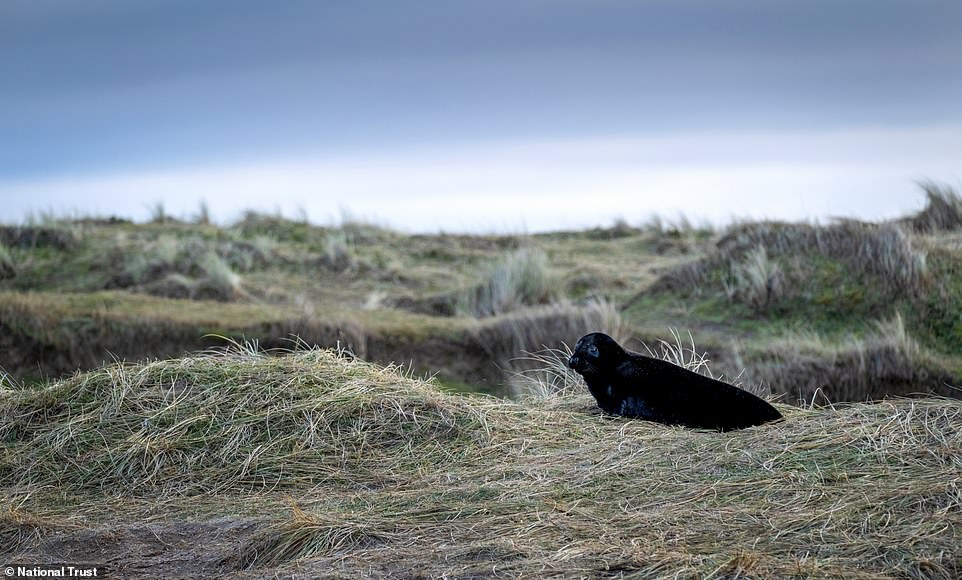
The first grey seal pup was discovered at the nature reserve in 1988, and the colony has grown since then, from 25 pups in 2001 to 3,399 pups in 2019.
This season still has a lot of work ahead of it.
If you spot a seal or a seal pup, the National Trust advises that you keep your distance.
“If you come across a seal or a pup, please keep your distance and do not approach or harm these natural creatures in any manner.”
